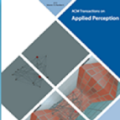This paper introduces the notion of cache-tapping into the information theoretic models of coded caching. The wiretap channel II in the presence of multiple receivers equipped with fixed-size cache memories, and an adversary which selects symbols to tap into from cache placement and/or delivery is introduced. The legitimate terminals know neither whether placement, delivery, or both are tapped, nor the positions in which they are tapped. Only the size of the overall tapped set is known. For two receivers and two files, the strong secrecy capacity -- the maximum achievable file rate while keeping the overall library strongly secure -- is identified. Lower and upper bounds on the strong secrecy file rate are derived when the library has more than two files. Achievability relies on a code design which combines wiretap coding, security embedding codes, one-time pad keys, and coded caching. A genie-aided upper bound, in which the transmitter is provided with user demands before placement, establishes the converse for the two-files case. For more than two files, the upper bound is constructed by three successive channel transformations. Our results establish provable security guarantees against a powerful adversary which optimizes its tapping over both phases of communication in a cache-aided system.
翻译:本文引入了将缓存插入编码缓存的信息理论模型的概念。 在装有固定大小缓存存储器的多个接收器和选择从缓存位置和/或交付中提取符号的敌人面前, 窃听第二频道的窃听器将窃取缓存到信息理论模型中, 引入了这个概念。 合法的终端既不知道是否安装、 交付或两者都被窃听, 也不知道它们被窃听的位置。 仅知道被窃听的总体数据集的大小。 对于两个接收器和两个文件来说, 确定了强大的保密能力 -- -- 最大可实现的文件率, 并同时保持整个图书馆的高度安全性 -- 。 当图书馆拥有两个以上的文件时, 强烈保密文件率的上下限和上限就会被导出。 可实现的代码设计取决于将窃听编码编码、 安全嵌入代码、 一次性键和编码缓存中结合起来的代码设计。 由基因辅助的上层连接, 在放置前向发送器提供用户要求的上层, 建立两封的侧。 超过两个文件, 由连续三个频道变换而成的上框, 。 我们的缓存的结果在最优化的缓存系统中, 建立一个可优化的缓存系统。




